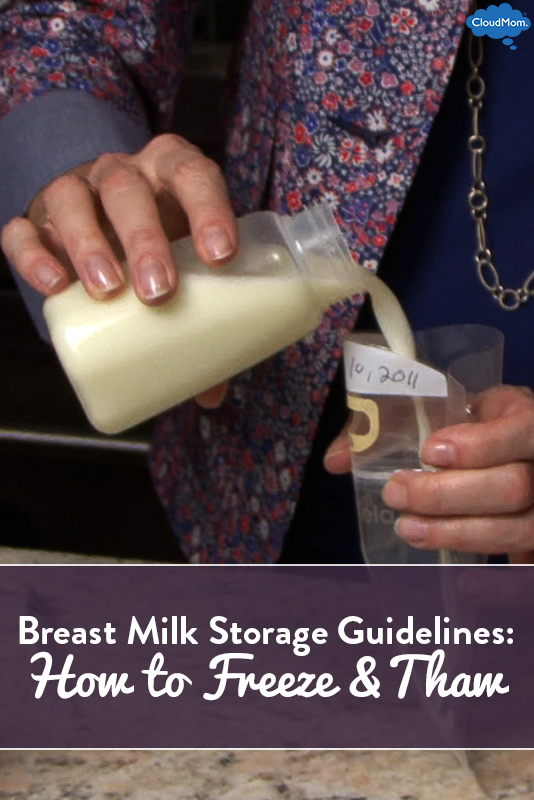Breast Milk Storage Guidelines: How to Freeze and Thaw Pumped Milk
Breast milk is called “liquid gold” for a reason – once you’ve gone to the trouble to pump milk for your baby you want to make sure you’re saving every last drop properly! I’m going to walk you through the rules for refrigerating and freezing pumped milk, and tell you how to thaw and warm it safely to feed to your baby.

Breast milk can be stored in the refrigerator or the freezer, and because it has antibacterial properties, it can also be left out at room temperature and fed to your baby within a few hours. However you save it, make sure to handle with care, or you really will be crying over spilled milk.
Handling Breast Milk:
- Wash your hands in hot soapy water
- Make sure the storage bag is flat on the bottom and cradle it in one hand
- Gently pour the milk into the bag
- Label the bag with the amount of milk and the date you pumped it, with a Sharpie or ball point pen
- IMPORTANT: Keep the oldest milk in the front of your refrigerator or freezer so you use it first
Here are the guidelines for how long you can store breast milk at different temperatures, according to the American Academy of Pediatrics.
Storing Breast Milk at Room Temperature
- Safe to store 4-8 hours (4 hours to be on the safe side)
- Use an ice pack when traveling
Storing Breast Milk in the Refrigerator
- Safe to store up to 4 days
- Best to use within 1-2 days
Storing Breast Milk in the Freezer
- Freeze 4 or 6 oz. bags and some 2 oz. bags
- Freeze milk immediately after pumping
- Safe to store for 1 month in the freezer, or 3-6 months in a deep freezer at 0 degrees Fahrenheit
*The one month guideline in the freezer is the AAP’s recommendation and is the most conservative storage estimate. Using frozen milk within one month is the best way to ensure that it retains all of its anti-bacterial and immunological properties, but many lactation consultants and doctors will tell you the milk is safe in a conventional freezer for up to 3 months and in a deep freezer for 6-12 months. Either way, you should always smell the milk before serving it. You’ll know if it’s actually gone bad (it will smell like sour milk!).
Thawing and Warming Guidelines
From the Refrigerator:
- Take out milk to warm to room temperature or warm in a glass of warm water
From the Freezer:
- Defrost overnight in the refrigerator or thaw in warm water
IMPORTANT: Never thaw or heat breast milk in boiling water or in the microwave. It can cause hot spots and burn your baby’s mouth, and it also destroys some of those great immunological properties in the milk. You should also never shake a bottle of breast milk to mix it up, which can also break down some of those properties. You should gently swirl the bottle if the milk has separated (you will often see the high-fat hind milk or “cream” rise to the top).

